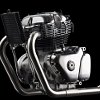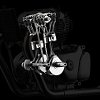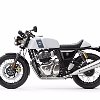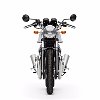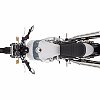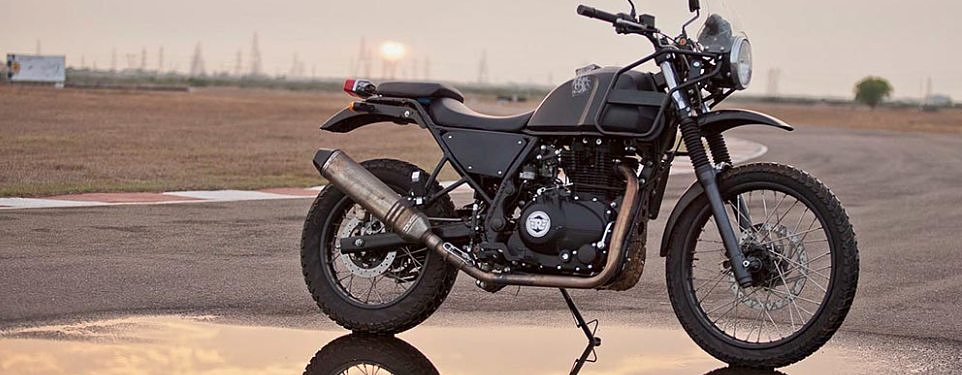Royal Enfield has made no secret of its plans to sell a substantial number of motorcycles in America. The motorcycles they’ve introduced at the Milan motorcycle show this year appear to be a very serious commitment to that effort.
At EICMA, Enfield announced two new motorcycles, the Interceptor 650 and Continental GT 650. Both are powered, as their nomenclature suggests, by a 650 cc engine, in this case a twin. This is a curious development, for it’s the first twin in the company’s history — sort of. Royal Enfield produced motorcycles in England and then later in India under the name “Enfield India.” After Royal Enfield went out of business, Enfield India continued producing and selling single-cylinder motorcycles. In 1999, they rebranded as “Royal Enfield,” despite the fact they did not own the name and rights, which they later won. Thus, these new 650 motorcycles are the first twins made by Royal Enfield in India. A rose by any other name, right?
The new twin engine is built around a single-piece, automotive-style forged crankshaft with a 270-degree firing order. Four valves serve each cylinder, and they are actuated by a single camshaft. The engine is air-and-oil cooled. Mark Wells, RE’s Head of Product Strategy, said, “The air-cooled engine just seemed the right thing to do...and it just makes the bike pure. It just makes the bike look and feel more correct.”
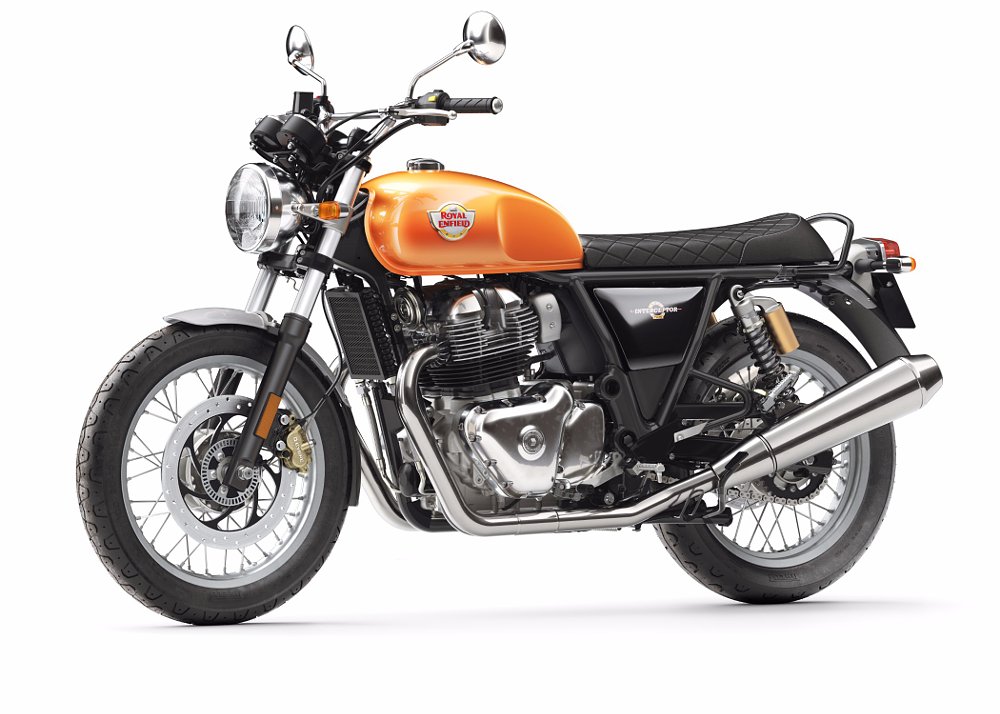
And given the strong emphasis Enfield is placing on past glory, the engine fits in well. The first bike, the Interceptor 650, is an obvious nod to the British twin of times past. “Interceptor” was the moniker bestowed upon a series of twins produced from 1960 until 1968. Those original Interceptors were largely intended for the American market, where multi-cylinder engines were largely preferred for road-going bikes.

That still holds true today, so a twin seems almost a necessity in order to secure the hearts and minds of American riders, many of whom are unfamiliar with Enfield’s long and rich history. The latest iteration of the Interceptor appears to pick up right where the previous one left off. Upswept mufflers, teardrop tank, and the flat seat help the bike cut a remarkably similar profile to its ancestor. The styling is classic Brit twin, and the engine’s modern underpinnings (fuel injection, four-vave heads, wet-sump oiling) should provide a classic-bike experience without all of the associated headaches. With 47 horsepower and a weight of 445 pounds, it’s quite similar to its namesake, which cranked out around 53 horsepower and weighed in at 430 pounds.
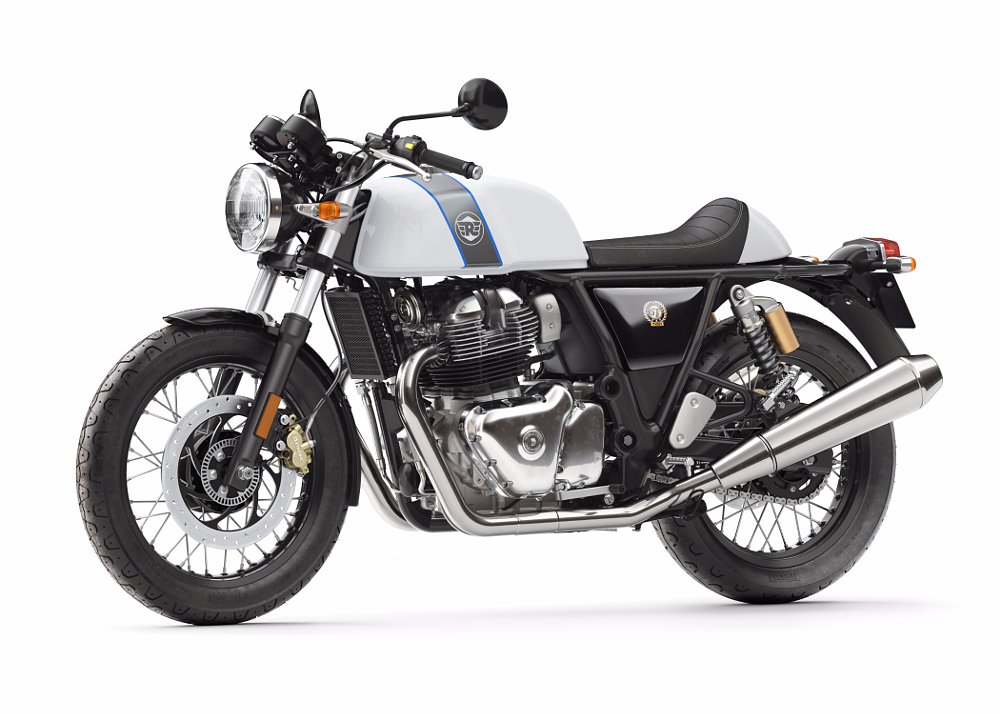
The second bike Royal Enfield announced is perhaps the logical extension of the Interceptor, the Continental GT 650. This motorcycle is remarkably similar in styling to their existing Continental GT, powered by a 535 cc single. This model receives a longer, narrower fuel tank slightly reminiscent of an older roadracing tank, solo seat and tailsection, rearsets, and clip-on handlebars (with integral rise).

A six-speed transmission backs up the engine on the motorcycles. Both bikes are fitted with 18-inch wheels. Tires are not specified in promotional materials, but Spurgeon put on his thinking cap and noted that they look a hell of a lot like Pirelli Phantoms. Both bikes have a standard fork that appears to use conventional damping rods, and rear shocks on both bikes are unbranded twin piggy-back coilovers. Single disc brakes are fitted to each wheel on both bikes.
Spurg and Lem’s hot takes
I got Spurg to tell me what he thought, because this style of bike is one he knows intimately. He expressed concerns over the dealer network and was also keen to know what the price was. He thinks they’ll sell some bikes if Royal Enfield can undercut the price of competitors (read: Triumph) and really kill it on the reliability front.
Me? I don’t really “get” the retro thing; I’d rather just have an old bike. However, I can certainly appreciate wanting the simplicity and easy-going nature of a standard twin that has the looks of the bikes of yesteryear that never seem to fade. It seems difficult to reconcile modern reliability with simple air-cooled engines, but if these twins don’t break down often, it appears as though Royal Enfield may have a winner. (I have no idea how they managed to squeak these through emissions, but they’re certainly in a mild state of tune.)

A few of the items weird me out visually. Disc brakes always catapult a bike into the “modern” category to my eyes, but there’s no denying the efficacy of modern brakes. The piggyback shocks don’t look bad, but they do look out of place from a chronological perspective. And those weird clip-ons-with-rise have the same profile of a set of “flipped” clubman bars, which irks me to no end.

Pretty minor complaints, I think. I’m really excited to ride one. The Interceptor is far more my speed than the Continental GT. It’s also interesting to me that this big step forward for Royal Enfield is really just a step back into the past. There will be a certain delicious irony if this new-old twin breathes new life into Royal Enfield, because it was the dying gasp of its parent company.
Maybe we really are living in the good old days.





